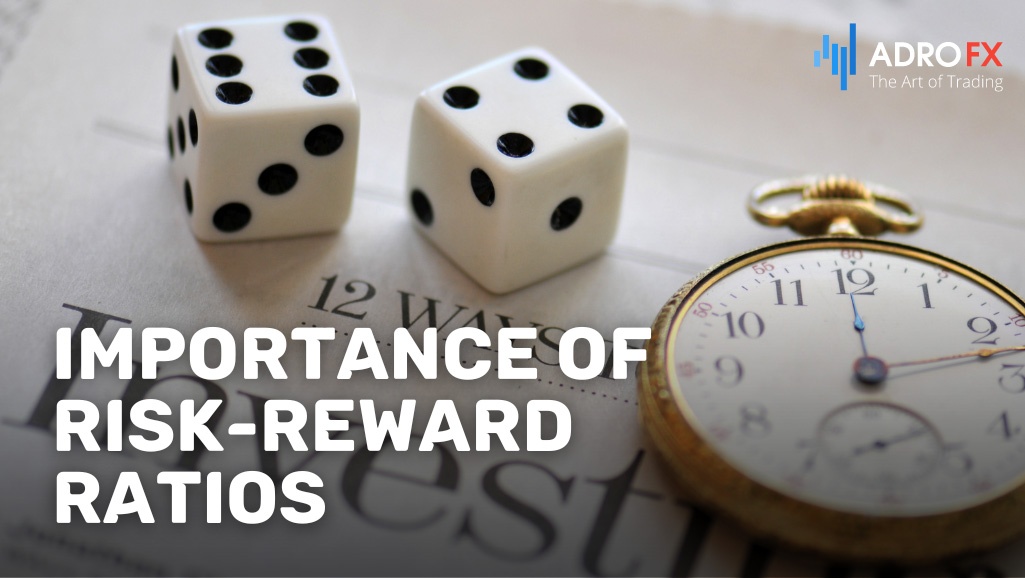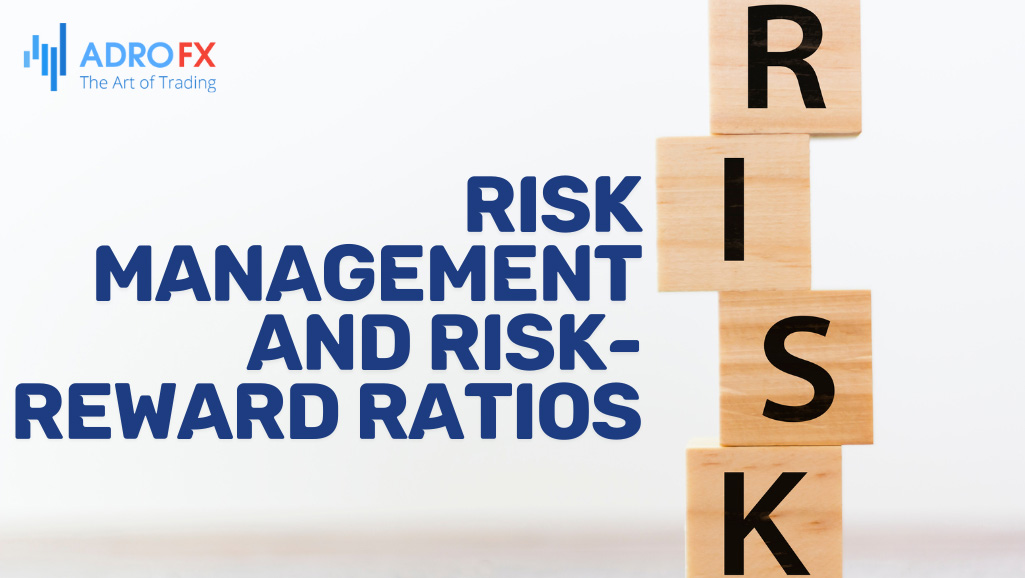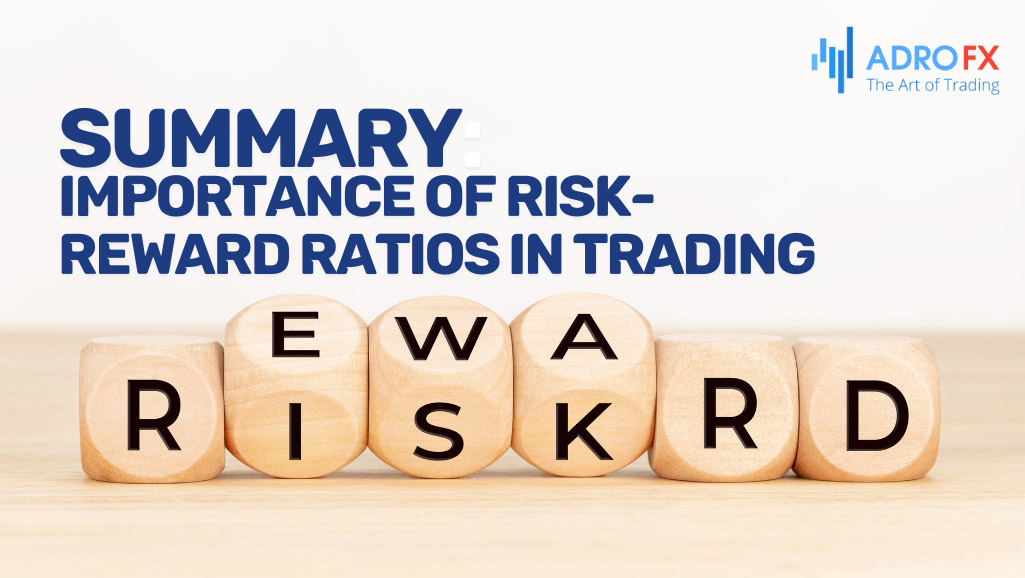Importance of Risk-Reward Ratios in Trading

In the trading world, the risk-reward ratio is a crucial metric that assists traders in evaluating the potential profit of a trade relative to its potential loss. This ratio essentially measures the amount of risk a trader is willing to take on for a potential reward. It is calculated by dividing the potential loss (risk) by the potential gain (reward). For instance, a risk-reward ratio of 1:3 indicates that for every unit of risk, the trader anticipates a reward of three units.
Risk-reward ratios are fundamental because they provide a structured approach to trading decisions, allowing traders to assess whether a trade is worth pursuing based on its potential outcomes. By using these ratios, traders can better manage their risk and make more informed decisions, striving for an optimal balance between risk and reward.
Utilizing risk-reward ratios is essential for successful trading strategies for several reasons:
- Promotes Discipline
It encourages traders to consider both the potential gains and losses of each trade, fostering a balanced perspective. This helps prevent impulsive decisions driven by emotions like greed or fear. - Enhances Risk Management
Consistent use of risk-reward ratios helps traders set predefined limits on potential losses while aiming to maximize potential gains. This approach is key to maintaining a sustainable trading strategy, ensuring that profits from successful trades outweigh losses from unsuccessful ones. - Ensures Long-Term Profitability
Traders who consistently apply favorable risk-reward ratios can achieve profitability even with a higher number of losing trades than winning ones. For example, a trader using a 1:3 risk-reward ratio only needs to win 25% of their trades to break even, underscoring the importance of this concept for long-term success in trading.
Understanding and applying risk-reward ratios is indispensable for traders aiming to develop robust and profitable trading strategies. This systematic approach not only aids in making informed decisions but also contributes significantly to effective risk management and long-term trading success.
Basics of Risk-Reward Ratios
Understanding Risk
In trading, risk refers to the potential for loss inherent in any trade. This includes the capital that a trader could lose if the market moves against their position. Risk is an unavoidable aspect of trading due to the unpredictable and volatile nature of financial markets. Contributing factors to risk include price fluctuations, market sentiment, economic events, and unforeseen news that can affect market conditions.
Understanding Reward
Reward represents the potential profit that can be gained from a trade. It is the positive outcome traders seek when they enter a trade, typically defined by a target price where they plan to exit to realize their profits. Rewards are the incentive for traders and are essential for the growth of trading accounts and achieving financial goals.
Calculating the Risk-Reward Ratio
The risk-reward ratio is calculated using a simple formula:
Risk-Reward Ratio = Potential Loss / Potential Gain
To illustrate, consider a trade where a trader buys a stock at $100, sets a Stop Loss order at $95 (risking $5 per share), and sets a Take Profit order at $115 (aiming for a $15 gain per share). The risk-reward ratio for this trade would be:
Risk-Reward Ratio = $5 / $15 = 1:3
This means the trader is risking $1 to potentially gain $3. If the trade reaches the target price, the trader will earn three times the amount risked. Conversely, if the trade hits the Stop Loss, the trader will only lose the predefined acceptable risk amount.
By consistently applying this calculation, traders can systematically evaluate the attractiveness of potential trades and ensure their trading decisions are based on a solid risk-reward framework.

Importance of Risk-Reward Ratios
Balancing Risk and Reward
Balancing risk and reward is crucial for making informed trading decisions. It ensures that the potential gains from a trade justify the potential losses. By maintaining a favorable risk-reward balance, traders can optimize their profit potential while minimizing their exposure to losses. This balance prevents traders from taking on excessive risk in pursuit of high rewards, which can lead to significant financial setbacks.
Impact on Trading Strategies
Risk-reward ratios significantly influence various trading strategies:
- Swing Trading
In swing trading, where trades are held for several days to weeks, traders often seek a risk-reward ratio of 1:2 or higher. This means they aim to make twice as much as they risk. This approach ensures that even if only half of the trades are successful, the overall strategy remains profitable. - Day Trading
Day traders might opt for smaller, more frequent trades with a risk-reward ratio of 1:1.5. This allows them to capitalize on short-term market movements while still maintaining a positive expected return. - Scalping
Scalpers, who make numerous trades within a single day, might use even smaller ratios, focusing on minimizing risk while making quick, incremental gains.
Psychological Benefits
Using risk-reward ratios offers significant psychological benefits for traders:
- Maintaining Discipline
Adhering to predefined risk-reward parameters helps traders avoid impulsive decisions driven by emotions like greed or fear. This disciplined approach ensures they stick to their trading plan and reduces the likelihood of deviating from the strategy during market volatility.
- Managing Emotions
Risk-reward ratios provide a clear framework for evaluating trades, allowing traders to remain calm and composed even when market conditions are turbulent. Knowing the potential risk and reward upfront reduces anxiety and promotes a more rational and objective approach to trading.
Practical Application of Risk-Reward Ratios
Setting Up Trades
Setting up trades with favorable risk-reward ratios involves several key steps:
- Identifying Entry Points
Traders need to determine potential entry points based on their market analysis, which could involve technical indicators, chart patterns, or fundamental analysis. - Setting a Stop Loss Order
This order defines the maximum acceptable loss for the trade. The Stop Loss should be placed at a level that invalidates the initial trade idea if reached. - Setting a Take Profit Order
This specifies the target price at which traders will exit the trade to realize their profits. The distance between the entry point and the Stop Loss represents the risk, while the distance between the entry point and the Take Profit represents the reward.
By comparing these distances, traders can calculate the risk-reward ratio and ensure it aligns with their trading strategy and goals.
Examples of Risk-Reward Ratios
- Swing Trade
A trader buys a stock at $50, sets a Stop Loss at $48 (risking $2 per share), and sets a Take Profit at $56 (aiming for a $6 gain per share).
Risk-Reward Ratio = $2 / $6 = 1:3
If the trade reaches the Take Profit target, the trader will earn three times the amount risked.
- Day Trade
A day trader buys a currency pair at 1.2000, sets a Stop Loss at 1.1980 (risking 20 pips), and sets a Take Profit at 1.2040 (aiming for a 40 pips gain).
Risk-Reward Ratio = 20 pips / 40 pips = 1:2
If the trade hits the Take Profit target, the trader will earn twice the amount risked.
Adjusting Ratios
Traders may need to adjust their risk-reward ratios based on changing market conditions and personal trading goals. Here are some considerations:
- Market Conditions
During periods of high market volatility, traders might opt for higher risk-reward ratios to compensate for increased uncertainty. Conversely, in stable market conditions, traders might be comfortable with lower ratios.
- Personal Goals
Traders with a higher risk tolerance and aggressive growth targets might aim for higher ratios, while conservative traders focused on capital preservation might prefer lower ratios.
- Continuous Review and Refinement
Adjusting ratios involves continuously reviewing and refining trading strategies. By analyzing past trades and outcomes, traders can identify patterns and make informed adjustments to their risk-reward parameters, ensuring that their approach remains aligned with their evolving goals and market dynamics.

Risk Management and Risk-Reward Ratios
Incorporating Risk Management
Risk-reward ratios are integral to a robust risk management strategy in trading. Effective risk management entails identifying, analyzing, and mitigating potential risks to safeguard trading capital and ensure sustainable profitability. By leveraging risk-reward ratios, traders can systematically assess potential trade outcomes, enabling informed decisions aligned with their risk tolerance and trading objectives.
Stop Loss and Take Profit Orders
Stop Loss Orders
These are crucial tools for managing risk by instructing to sell a security when it hits a specific price, thereby limiting potential losses. Implementing a Stop Loss order ensures that losses are capped at a predetermined level, preventing any single trade from disproportionately impacting the portfolio.
Take Profit Orders
Conversely, these orders instruct to sell a security when it reaches a specified price to secure profits. They enable traders to exit trades at target reward levels, safeguarding gains before market conditions potentially turn unfavorable.
By integrating Stop Loss and Take Profit orders alongside risk-reward ratios, traders can effectively manage trades, control risk exposure, and achieve desired profit targets. This disciplined approach fosters emotional discipline, adherence to risk management strategies, and consistent trading performance.
Diversification
- Importance of Diversification
Diversification is pivotal in risk management, involving the distribution of investments across different assets, markets, or trading strategies to mitigate overall risk exposure. A diversified portfolio helps cushion against adverse price movements in any single asset or market segment, thereby promoting a balanced risk-reward profile.
- Benefits of Diversification
By diversifying holdings across assets with varying risk-reward ratios, traders can smooth portfolio volatility and enhance prospects for sustained returns. This strategy reduces reliance on specific market movements and fortifies resilience against unforeseen market fluctuations.
Common Mistakes and Pitfalls
Ignoring Risk-Reward Ratios
Neglecting risk-reward ratios can lead to ill-informed decisions and substantial financial losses. Failing to evaluate the equilibrium between potential risks and rewards may prompt traders to pursue trades offering inadequate returns relative to their risk exposure. Such oversight undermines trading capital and jeopardizes long-term profitability.
Overestimating Rewards
Overestimating potential rewards breeds unrealistic expectations and adverse trading outcomes. Traders overly fixated on profit potentials may assume excessive risks, presuming rewards will outweigh losses. This overconfidence can precipitate significant financial setbacks, especially if market movements diverge from anticipated trajectories.
Underestimating Risks
Underestimating risks poses grave pitfalls for traders. Ignoring potential losses can lead to inadequate risk management and susceptibility to adverse market conditions. Failing to acknowledge risks may deter traders from setting appropriate Stop Loss orders, leaving positions vulnerable to substantial losses amidst volatile market shifts.
In summary, integrating risk-reward ratios, employing Stop Loss and Take Profit orders, and embracing diversification are pivotal components of a resilient trading strategy. These practices mitigate risks, optimize reward potentials, and foster consistent trading performance, steering traders toward sustained success in dynamic financial markets.

Summary: Importance of Risk-Reward Ratios in Trading
Understanding and effectively utilizing risk-reward ratios is essential for achieving success in trading. These ratios define the balance between potential risks and rewards, enabling traders to make informed decisions, manage losses, and optimize profitability. Key aspects include:
- Balancing Risk and Reward
Maintaining a favorable risk-reward balance is crucial to safeguarding trading capital and ensuring profitable outcomes. By assessing potential risks against expected rewards, traders can mitigate financial exposure and capitalize on favorable market opportunities.
- Impact on Trading Strategies
Risk-reward ratios play a pivotal role in shaping trading strategies. Whether in swing trading, day trading, or scalping, these ratios guide decision-making processes, aligning trading approaches with individual goals and market conditions to achieve consistent profitability.
- Psychological Benefits
Implementing risk-reward ratios promotes discipline and reduces emotional decision-making. By setting clear parameters for risk and reward, traders can maintain a rational trading approach, minimizing the influence of greed or fear during market fluctuations.
- Practical Application
Setting up trades with favorable risk-reward ratios involves identifying entry and exit points based on thorough market analysis. Real-world examples illustrate how traders can calculate and adjust ratios to optimize trade setups according to evolving market dynamics and personal objectives.
- Risk Management Integration
Integrating risk-reward ratios into broader risk management strategies is critical. Utilizing Stop Loss and Take Profit orders effectively helps control risk exposure and secure profits, while diversification across assets and strategies mitigates overall portfolio risk.
- Avoiding Common Mistakes
Neglecting risk-reward ratios, overestimating potential rewards, or underestimating risks can lead to poor trading outcomes and financial losses. A disciplined approach centered on balanced risk assessment is essential for sustainable trading performance.
Final Thoughts
Incorporating risk-reward ratios as a cornerstone of a comprehensive trading plan is imperative for long-term success in dynamic markets. Systematically evaluating trade opportunities based on these ratios ensures alignment with risk tolerance and financial objectives, fostering prudent decision-making and consistent performance.
Adopting disciplined practices, such as setting appropriate risk parameters, diversifying investments, and refining strategies based on ongoing risk-reward analysis, enhances trading effectiveness. Moreover, managing psychological factors through structured risk management promotes resilience and clarity in navigating market volatility.
Consistently applying risk-reward ratios within a well-rounded risk management framework not only safeguards trading capital but also cultivates sustained profitability and growth. By adhering to these principles, traders can navigate the complexities of trading with confidence, positioning themselves for success in the competitive world of financial markets.
About AdroFx
Established in 2018, AdroFx is known for its high technology and its ability to deliver high-quality brokerage services in more than 200 countries around the world. AdroFx makes every effort to keep its customers satisfied and to meet all the trading needs of any trader. With the five types of trading accounts, we have all it takes to fit any traders` needs and styles. The company provides access to 115+ trading instruments, including currencies, metals, stocks, and cryptocurrencies, which make it possible to make the most out of trading on the financial markets. Considering all the above, AdroFx is the perfect variant for anyone who doesn't settle for less than the best.










